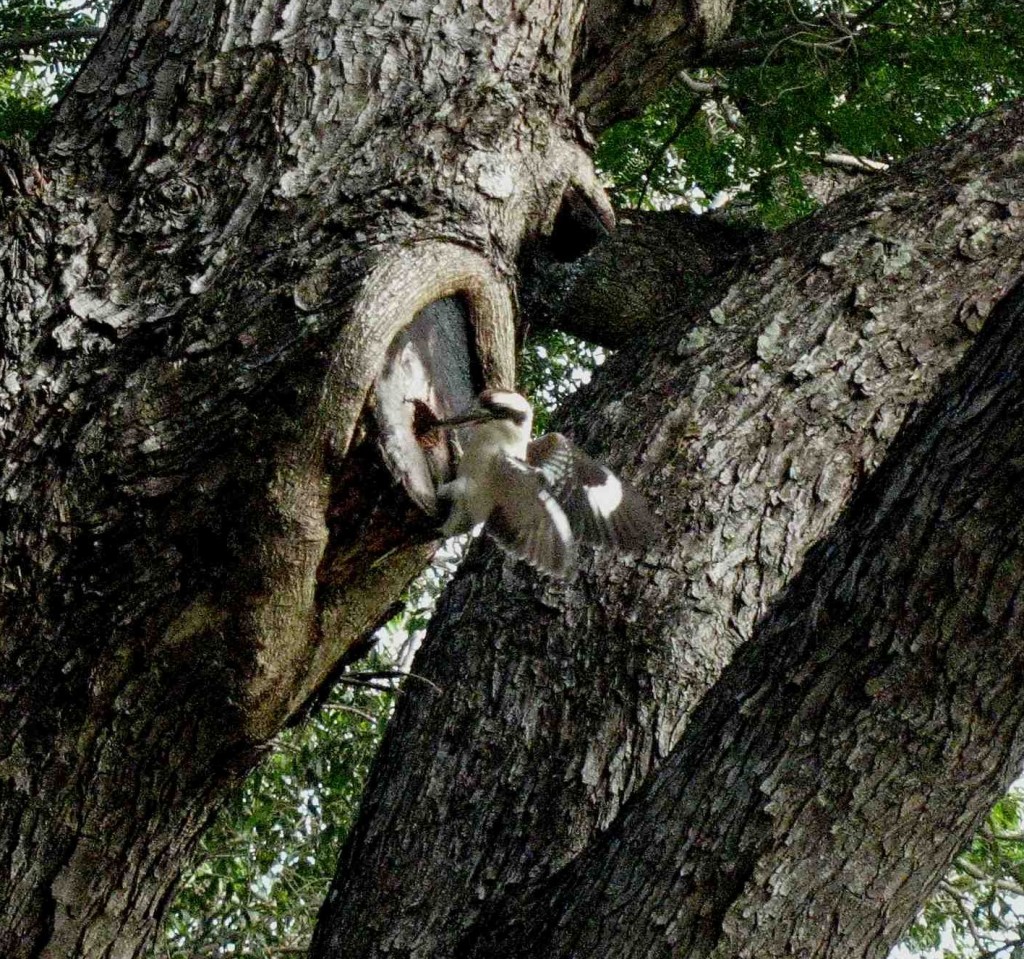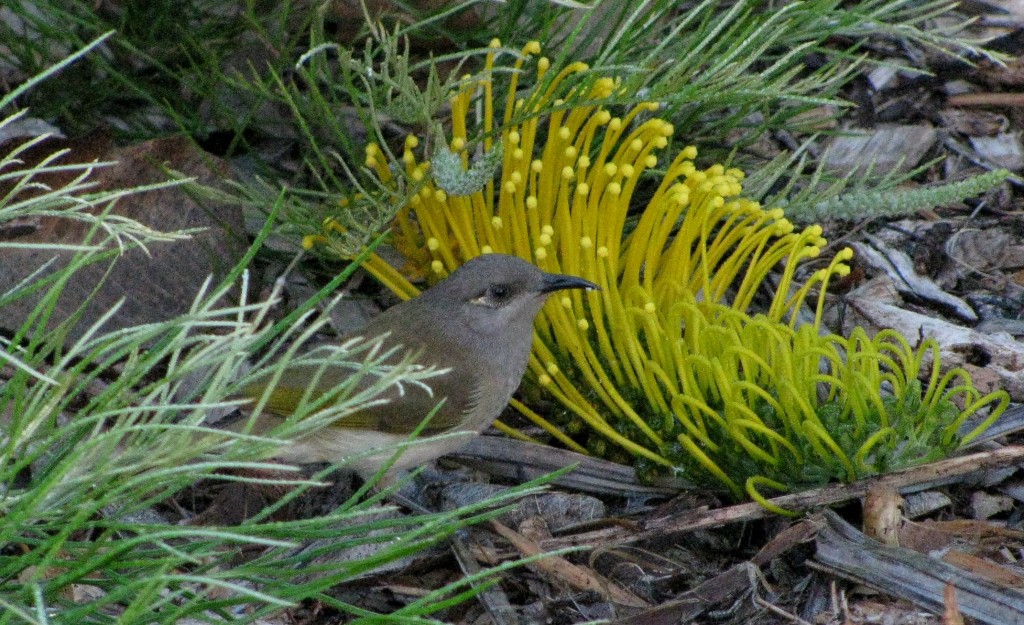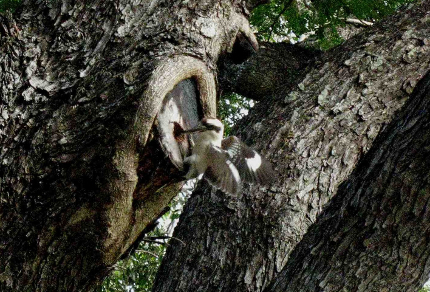In the cool freshness of early morning, I explored Anderson Park Botanical Gardens. I found bush stone-curlews skulking beneath a sausage tree and observed two laughing kookaburras repeatedly swoop in curving flight between a rain tree’s outer branches and a particular spot on one of the tree’s several massive trunks. When I looked carefully, I noted that each kookaburra flew from a branch to the trunk, grabbed onto the base of a severed branch’s stump with its feet, rapped at the centre of the stump with its hefty beak, and then kicked off and glided back to its perch on the branch. After one bird completed the sequence of actions, the second bird performed the same sequence. A few times, both birds were in the air at the same time, one following quickly on the tail of the other to create a double-whammy performance with a pass-by in flight.

Laughing Kookaburra and Trapeze Flight ‘Post’ (© Magi Nams)
These, then, were the territorial displays called trapeze flights I’d read about in Sarah Legge’s book Kookaburra: King of the Bush. They’re called trapeze flights because the birds swoop past each other in opposite directions, like trapeze artists performing under The Big Top. Along with the bush king’s high-amplitude, maniacal vocalizations, such trapeze flights and another ritualized display called a circular flight display, are the kookaburra’s means of announcing and defending the borders of its family group’s home territory.1 The two birds I observed would have belonged to the same group, and had I remained longer, I may have observed trapeze flights performed by members of another laughing kookaburra group claiming the adjacent territory.
Defending one’s territory is a big thing for birds. As I write this post, I hear the assertive notes of brown honeyeaters – by far the most abundant species of honeyeater in the parks and gardens of Townsville – ringing out, proclaiming ownership of particular areas encompassing nectar-bearing trees and shrubs. When I walk, run, or cycle the Ross River Parkway, I hear the brown honeyeaters’ songs spaced out along the riverside green space, some on one side of the path and some on the other. The city’s population of these honeyeaters must number in the tens of thousands – if not more – nourished by the many paperbarks and eucalypts, as well as grevilleas and banksias, used in landscaping and recreations of native habitat. Brown honeyeaters breed from June to January,2 so it’s prime breeding time right now. No wonder the males’ vocal cords have been getting a workout.

Brown Honeyeater (© Magi Nams)
Today’s birds: magpie-larks, rainbow lorikeets, peaceful doves, Australian white ibises, mynas, brown honeyeaters, white-breasted woodswallows, house sparrows, white-bellied cuckoo-shrike, Australian magpies, blue-faced honeyeater, straw-necked ibis, white-gaped honeyeater, rock doves, spangled drongo, foreste kingfishers, figbirds, rainbow bee-eaters, Australian raven, Pacific black ducks, mallard, bush stone-curlews, royal spoonbill, masked lapwing, laughing kookaburras, yellow honeyeater, white-throated honeyeater.
References:
1. Sarah Legge. Kookaburra: King of the Bush. 2004. CSIRO PUBLISHING, Collingwood, Victoria, p. 46.
2. Graham Pizzey and Frank Knight. The Field Guide to the Birds of Australia. 1997. Angus & Robertson, Sydney, p. 404.


